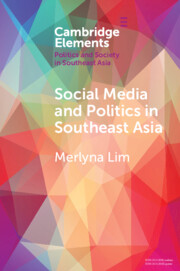Element contents
Social Media and Politics in Southeast Asia
Published online by Cambridge University Press: 29 November 2024
Summary
- Type
- Element
- Information
- Online ISBN: 9781108750745Publisher: Cambridge University PressPrint publication: 02 January 2025
References
- 2
- Cited by

